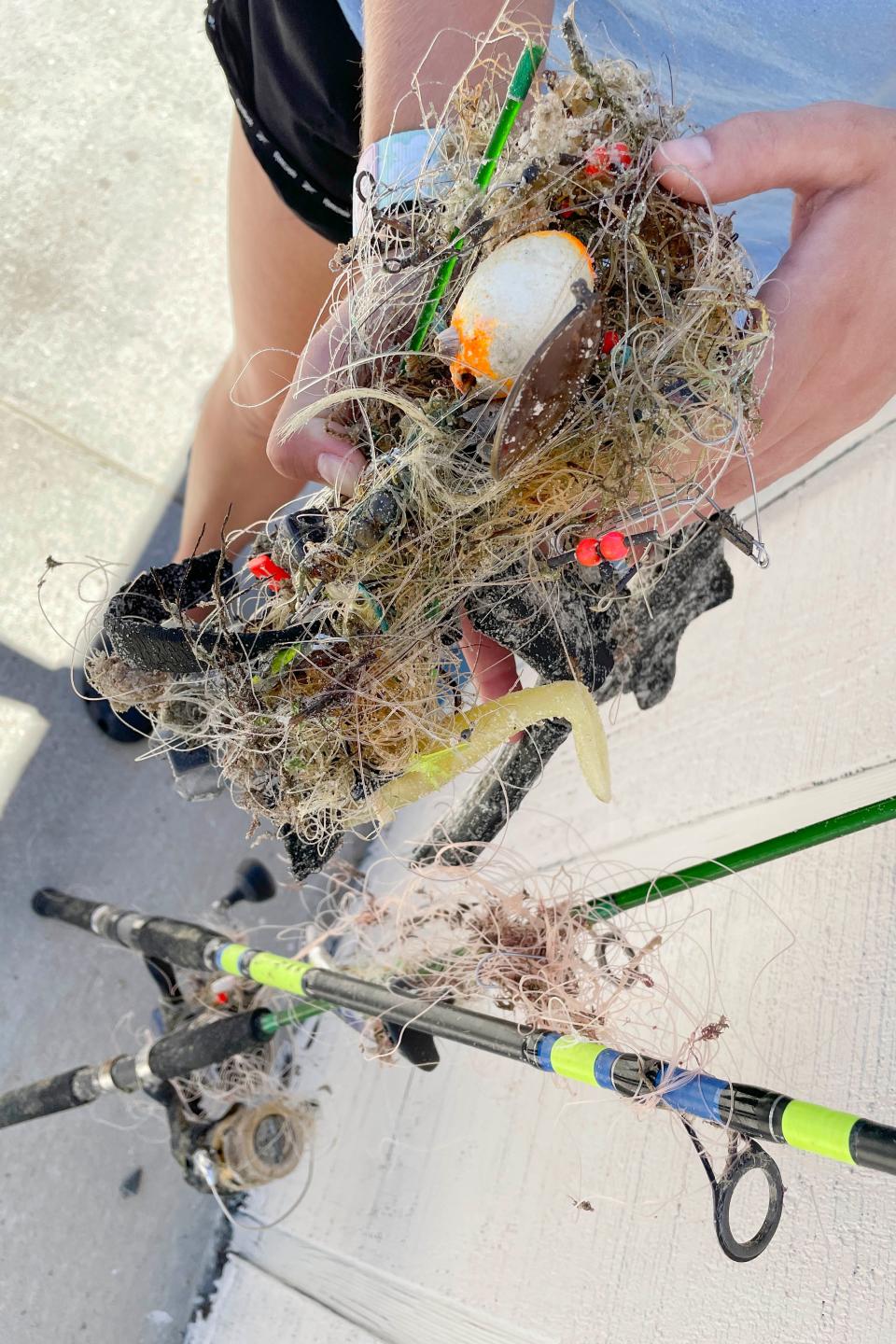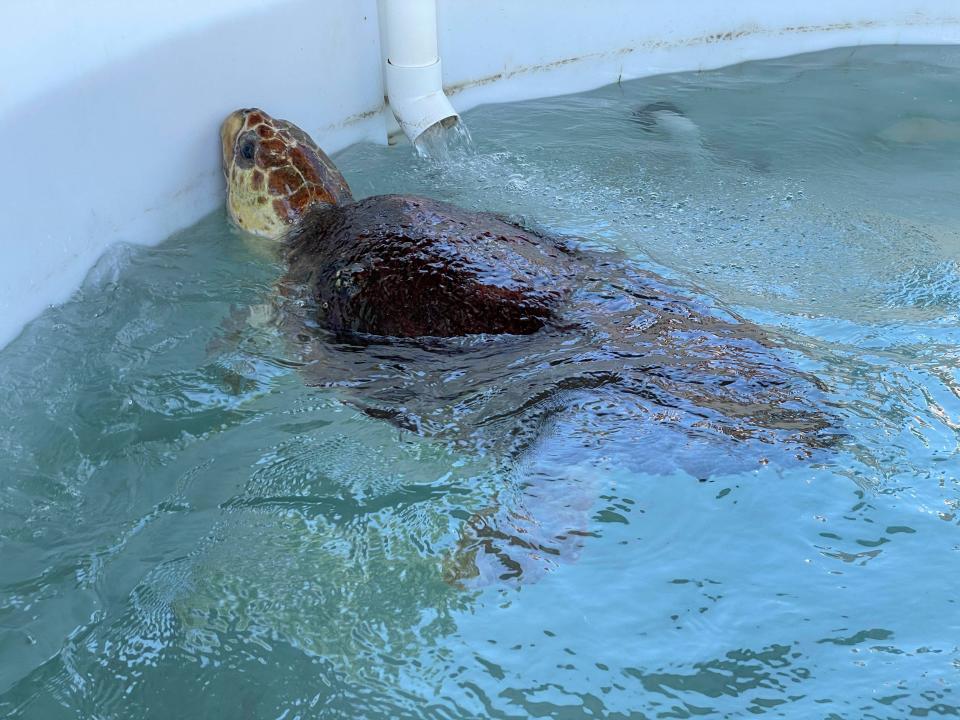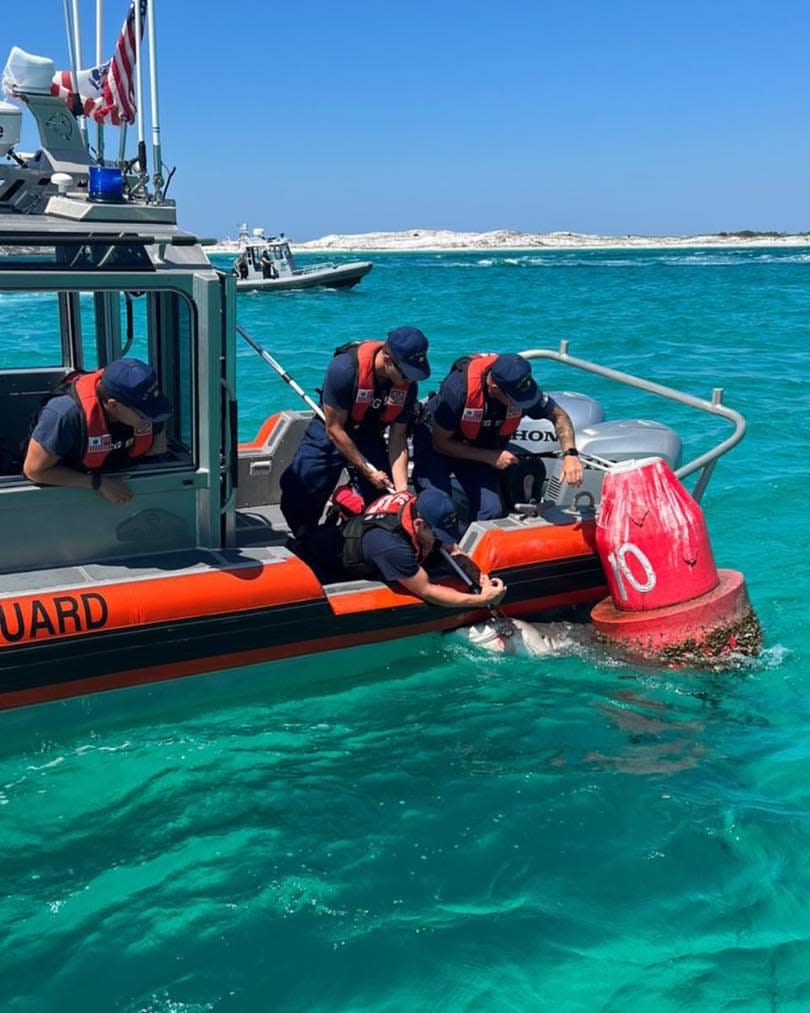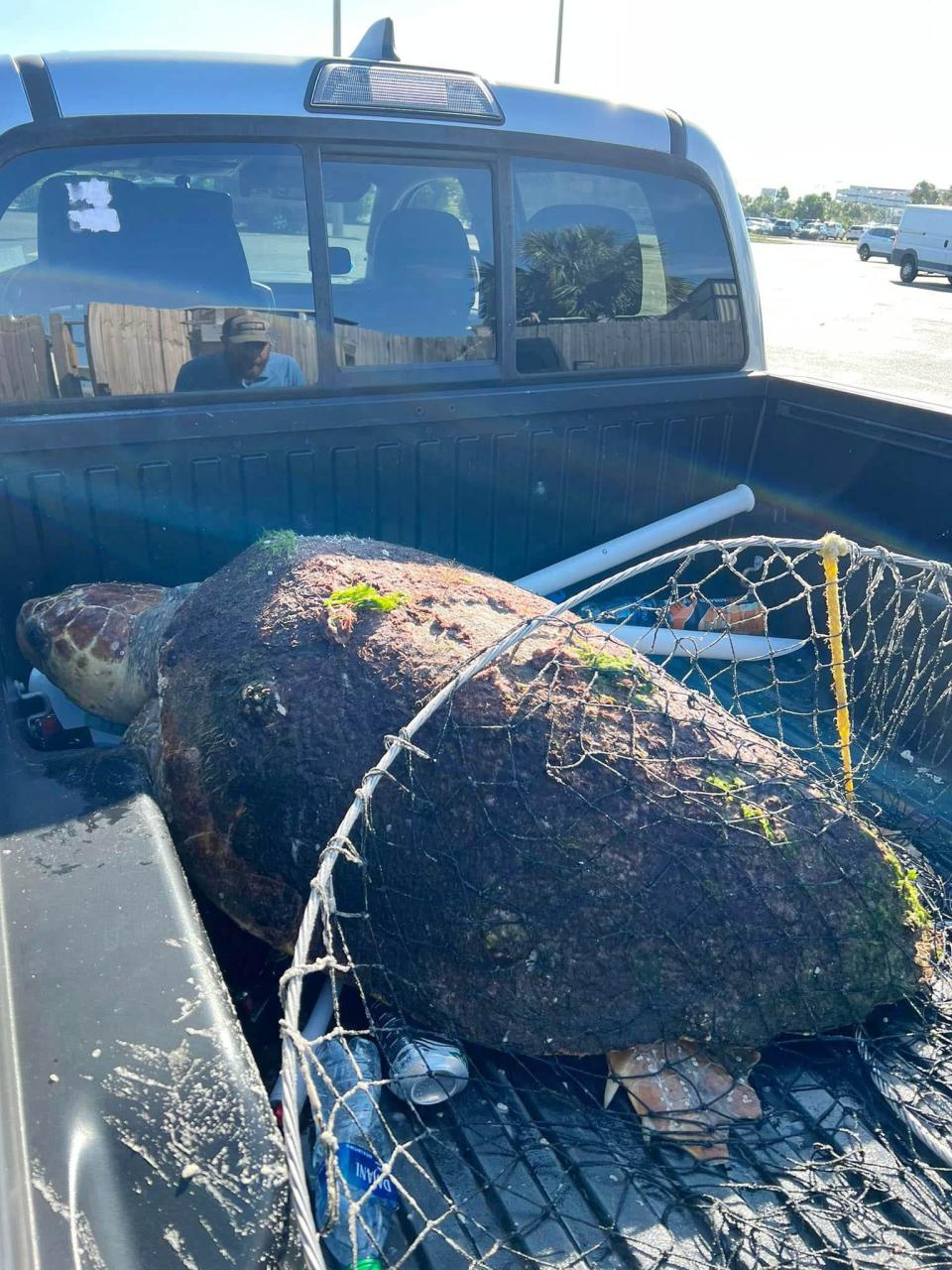Bird, shark rescues in Okaloosa show importance of properly disposing fishing line, tackle
Okaloosa County Sheriff’s Office Lt. Matt Harrison and Lt. Jeremy Gilbert were cruising along Santa Rosa Sound while off duty on the Fourth of July when they spotted an osprey struggling in the water.
The bird had a treble hook stuck to its right leg and face and was barely able to stay afloat. Had Harrison and Gilbert not been there, it is likely the bird would have died.
Their rescue was one of many in Okaloosa County over the past month.
Rehabilitated sea turtles released: Gulfarium C.A.R.E. Center releases 4 rehabilitated sea turtles back into the Gulf of Mexico
More about conservation: How to help conserve Florida wildlife as sea turtles, manatees become more active this spring
According to Melissa Smith, public information coordinator for the northwest region of the Florida Fish and Wildlife Conservation Commission, hundreds of coastal animals such as seabirds, sea turtles and marine mammals are snagged in monofilament fishing line and other fishing tackle in Florida each year.
“Wildlife entanglements with fishing line and other debris unfortunately still happen across the state,” Smith said. “Fishing line can be deadly to waterbirds, sea turtles and other wildlife, so disposing of it properly can save wildlife from pain and suffering.”

Monofilament is a strand of strong, flexible plastic used for fishing, and most of it is non-degradable in the water. According to the FWC, it can last up to 600 years. Boaters like Harrison have also noticed the prevalence of wildlife entanglements.
“I’ve been in the area for a long time and when I owned my own boat would go out. I have seen other birds entangled,” Harrison said. “When I used to fish on the pier I would see birds occasionally entangled in fishing line or have lures stuck to their beaks or stuck to their feet. It’s fairly common.”
Recent incidents with turtles
At least three animals have been freed from fishing line recently. Coast Guard Station Destin crew members rescued a shark that was trapped in a fishing net while on a routine voyage June 16.
On July 5, a 217-pound loggerhead sea turtle was found entangled with 5.5 pounds of fishing line, hooks, lures and two fishing rods at the Okaloosa Island Pier.
So far this year, there have been nine turtles rescued from the Okaloosa Island Pier, according to Tabitha Siegfried, sea turtle stranding coordinator for the C.A.R.E. Center at the Gulfarium Marine Adventure Park.
Last year, the nonprofit rescued more than 100 turtles. The loggerhead sea turtle, now named “Carole,” suffered a wound to her front right flipper but is expected to make a recovery in about two months.

However, not all animals are so lucky. Monofilament entanglements can result in drowning, starvation or loss of flippers or tails.
“Line can potentially cut into an animal’s skin or get wrapped around an appendage,” Smith said. “Entangled limbs often must be amputated. Line can also get wrapped around a bird’s beak or an animal’s mouth, preventing them from feeding normally.”
In Miramar Beach last year: 'This is so sad': Lifeguard saves sea turtle tangled in fishing line off Miramar Beach
Discarded line ingested by wildlife can cause internal issues such as impaction — especially if other digestible man-made debts is also ingested — or internal entanglement in areas such as the gastrointestinal tract.
Monofilament line and other fishing tackle enters coastal systems when anglers snag vegetation or marine debris, causing the line to break, according to the FWC. Improper disposal of fishing line or tackle also contributes to line in the environment.

“Accidents happen and your lines do get broken off. You can’t retrieve your lure a lot of times when your line does get broken off,” Gilbert said. “But for those people who think they can just discard them or discard hooks without putting them in a trash can, this is what can happen.”
Birds like the osprey Harrison and Gilbert rescued sometimes become ensnared in hooks while feeding on fish carcasses or when they spot a shiny lure. Harrison and Gilbert believe that may have been the case since the lure was hooked in the osprey’s right leg.
“I suspect it got embedded in his foot because they go in feet first. Then once it was stuck in his foot, he tried to pull it out and in doing so, the second hook got caught in his face,” Harrison said. “So he can’t fly because he can’t get enough lift and get the proper angle. He was in water that was deeper than he could stand.”
'I couldn't watch him die'
Harrison and Gilbert were on their way to Spectre Island when they spotted the bird. The island is home to a myriad of wildlife. Osprey commonly loiter above the water near the Island looking for fish.
Harrison said he immediately got Gilbert’s attention and they spun the boat around.
“I have a deep love for animals. Always have. I have a very special place in my heart for birds, and I just couldn’t watch him suffer,” Harrison said. “I couldn’t watch him die knowing that I could possibly help.”
They were able to use a flag pole to fish the osprey out of the water. They then returned to shore to get a more stable platform and put a towel over the bird’s head to calm it down. The hook dislodged from the bird’s face on it's own, but was still stuck in it’s talon.
“The hook in his foot had gone past the barb. So we worked together,” Harrison said. “I put the towel back over his head, got him calmed back down and Jeremy used some angle cutters to clip the hook loose from his foot.”
Deputies rescue deer: Oh, deer! Okaloosa deputies rescue fawn trapped in Crestview fence
The bird appeared to be tired from the ordeal and rested on the boat for second as if to say “Thank you,” Gilbert said. Then it flew off across the water.
A video of the rescue posted to Facebook has since received over 1.5 million views. Harrison said he hopes it highlights the importance of protecting Florida’s wildlife.
“It was a very emotional moment. Very heartwarming,” he said. “I hope it says that we’re stewards on this world and we’re responsible for the creatures as well as ourselves. We have to take care of those who can’t take care of themselves all of the time.”

How to protect coastal wildlife
Smith said people can help prevent entanglements by properly disposing of their fishing line and any trash, as well as taking home all beach gear at the end of the day.
The FWC maintains a network of line recycling bins and drop-off locations throughout the state. Multiple recycling bins can be found at Destin Harbor, Okaloosa Island Pier, Henderson Beach State Park and other places.
To find the nearest monofilament recycling station, visit https://mrrp.myfwc.com/.
“If you find fishing line in the environment, be sure to collect it and dispose of it in specified containers,” Smith said. “It is also a good idea to cut the line into six inch pieces so that if the container breaks or spills and the disposed of line cannot be collected, it has a reduced chance of entanglements.”
Casting away from birds and shoreline vegetation, keeping bait buckets covered and properly discarding fish carcasses in lidded trash cans or marked repositories can also help. Not feeding seabirds prevents them from congregating in areas where they are more likely to get hooked.
“If you do accidentally hook a bird while fishing, don’t cut the line,” Smith said. “Hooks left in birds can cause further injury, and any line attached can cause entanglement. Instead, gently reel in the bird, remove the hook and then release the bird once the hook is removed.”
Anglers who inadvertently hook a turtle should also never cut the line. Keeping the turtle on the line allows rescuers to catch the injured animal and give it the care it needs. Entangled wildlife should be reported to the FWC at 1-888-404-3922.
People should never attempt to free an animal without professional help, as it could cause injury to them or the animal, Smith said. Dumping of marine debris can also be reported to the FWC at the number provided or your local sheriff’s office.
This article originally appeared on Northwest Florida Daily News: Shark, bird, turtle get tangled in fishing line, rescued in Okaloosa

